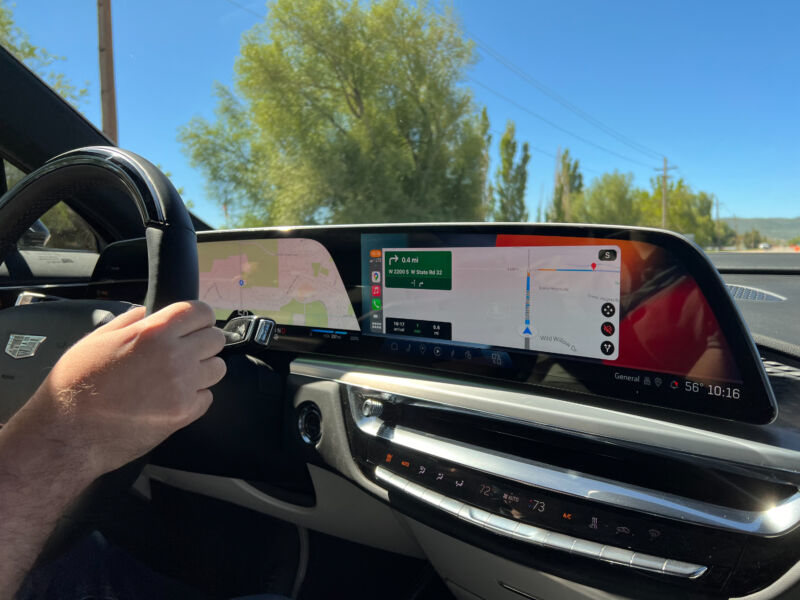
Jonathan Gitlin
Few things have improved the state of in-car infotainment more than the advent of the phone casting interfaces from Apple and Google. Apple CarPlay and Android Auto let you run navigation or audio apps on your phone and communicate with them via the car’s native infotainment screen, avoiding the need to handle your phone while driving.
That’s why General Motors’ decision to ditch CarPlay and Android Auto from new EVs from model year 2024 onward has been greeted with such dismay.
GM has rolled out a new infotainment platform across its new electric vehicles called Ultifi. Built on the Android Automotive OS—not to be confused with the Android Auto phone casting system—a build we used in a model year 2023 Cadillac Lyriq featured the most complete implementation of CarPlay we’ve yet experienced, making GM’s decision to ditch the systems even more frustrating.
At the time, GM told Ars that it wanted to offer a more integrated system than is possible using phone casting. A more skeptical take might be that using a casting interface means none of the user’s data is seen by the automaker. The same is not true if you connect a phone just using Bluetooth, nor, obviously, if you use the built-in infotainment’s features appreciate navigation apps.
But today, Motor Trend reports that GM’s head of infotainment, Tim Babbitt, gave another reason for dropping Android Auto and Apple CarPlay. Motor Trend wrote, “CarPlay and Android Auto have stability issues that manifest as bad connections, poor rendering, slow responses, and dropped connections. And when CarPlay and Android Auto have issues, drivers pick up their phones again, taking their eyes off the road and totally defeating the purpose of these phone-mirroring programs. Solving those issues can sometimes be beyond the control of the automaker. You can start to see GM’s frustration.”
It’s not a complaint without merit. I’ve had plenty of experience with wireless Apple CarPlay and Android Auto across dozens of vehicles from just about every OEM, and, without a doubt, the wireless interfaces are far buggier than using a USB cable to cast the phone to the infotainment screen. And it’s possible to sympathize with the automaker’s plight here since, most of the time, users will blame the infotainment system rather than their phones. (In practice, rebooting your smartphone will resolve almost all of the issues one might face when using Apple CarPlay or Android Auto.)
Babbitt also pointed to compatibility issues with wired Android Auto connections and wired CarPlay problems with old iPhones, according to Motor Trend.
But GM wrote to the publication to say that “comments about GM’s position on phone projection were misrepresented in previous articles and to reinforce our valued partnerships with Apple and Google and each company’s commitment to driver safety. GM’s embedded infotainment strategy is driven by the benefits of having a system that allows for greater integration with the larger GM ecosystem and vehicles.”

